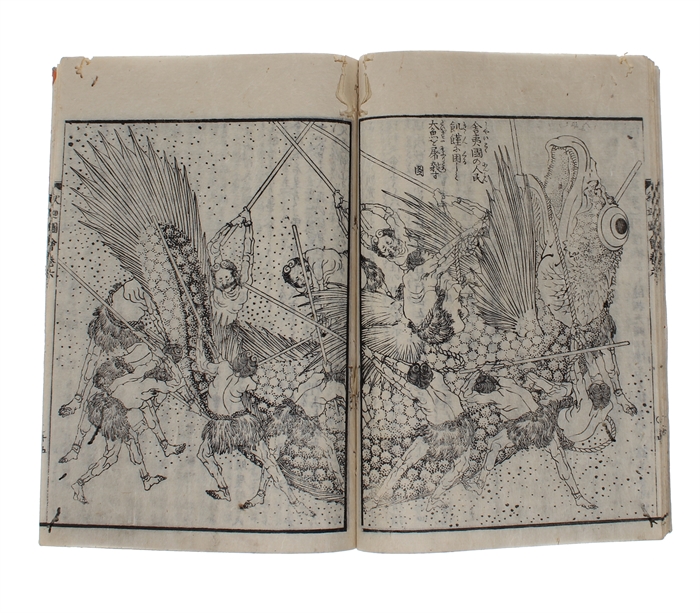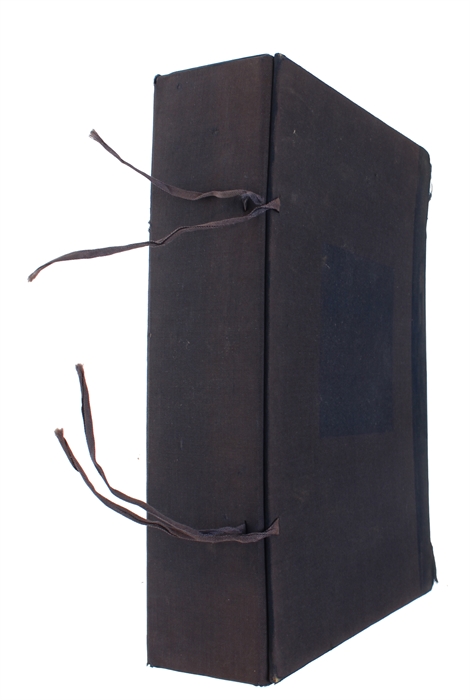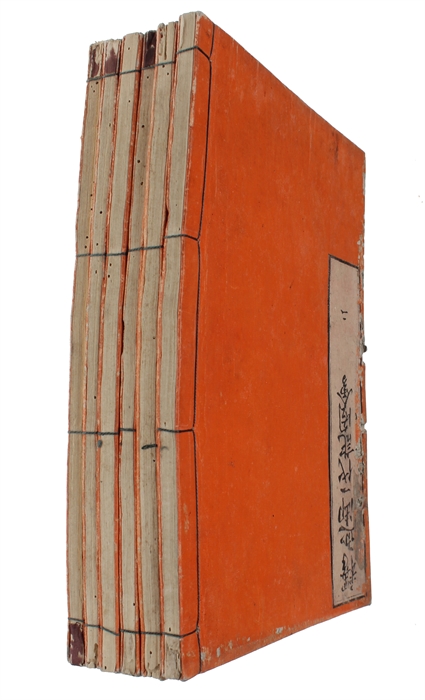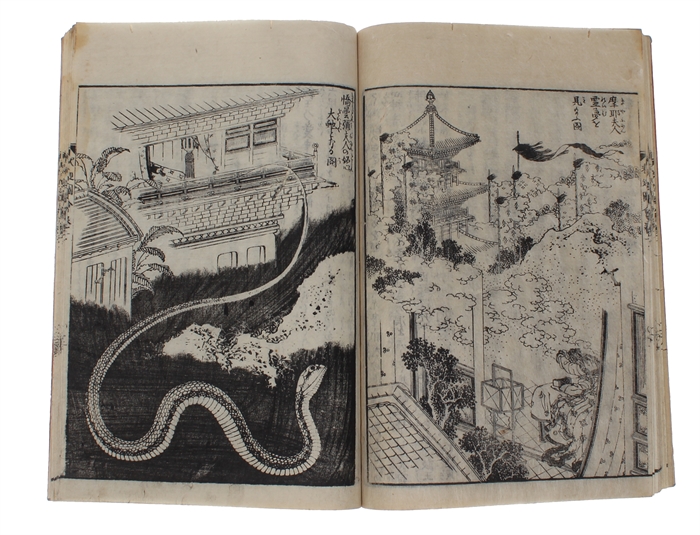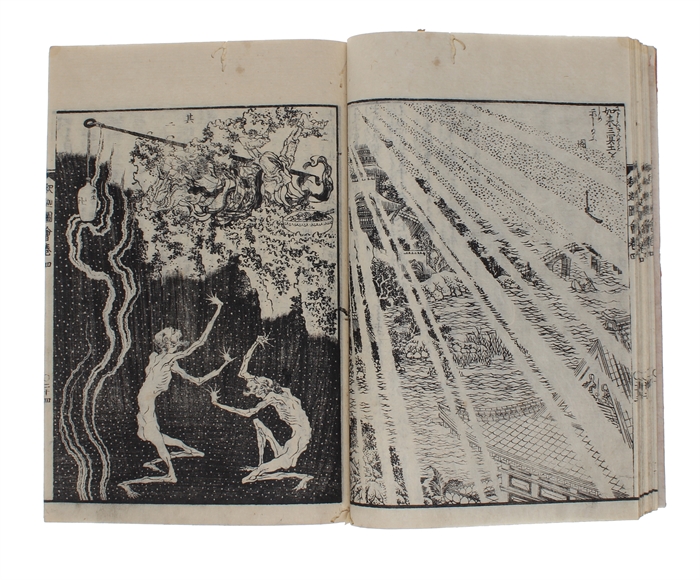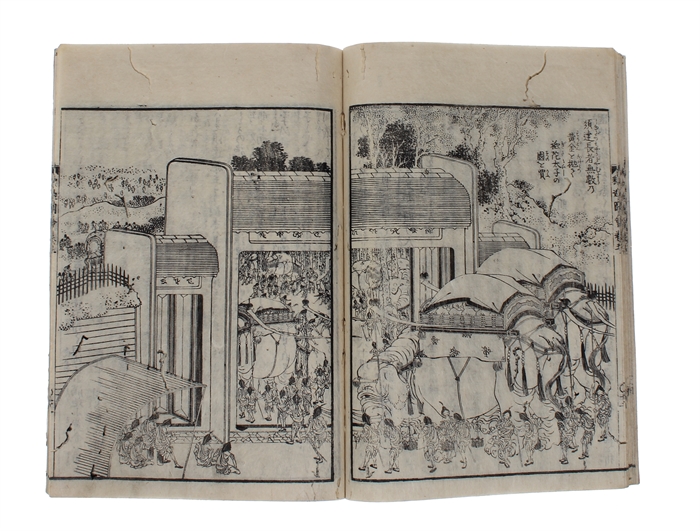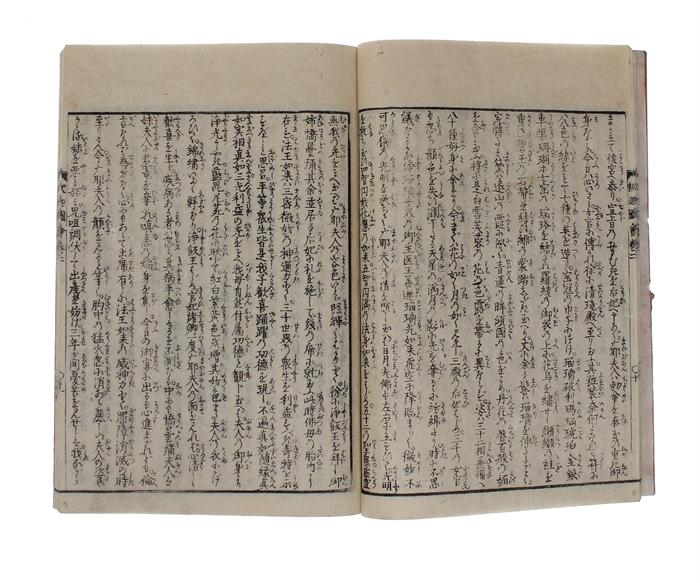HOKUSAI, KATSUSHIKA.
Shaka Goichiki Dai Ki Zue (i.e. “The Story of Shakyamuni The Lord Buddha”). 釈迦御一代記図会巻四. DAIKO SOGEN (preface).
Osaka, Kawachiya, 1845, fourth month (Kōka 2).
4to (255 x 180 mm). 6 volumes uniformly bound in orange contemporary stitched spineless Fukuro Toji bindings with white paper title label pasted on to front wrappers. Housed in a chitsu. Severly affected by wormholes. Heavily affected by wormholes throughout, otherwise clean. Chitsu-case with wear. 35; 39; 39, 36, 30; 28 pp.
Beautiful work written by Yamada Isai with illustrations by Katsushika Hokusai consisting 55 episodes in the life of Shaka (Buddah). Hokusai has made 35 illustrations for 27 episodes, and 23 of those are new iconographies in Shaka’s biography, inspired by various pictorial resources, while other 12 scenes originate in the former or traditional ones of these subjects. With thirty-two monochrome illustrations and covers various events, starting from the court of King Suddhodana, the Buddha's father, before his birth in the Indian kingdom of Kapilavastu, and ending with the distribution of the Buddha's relics after his death. Throughout Asia, depictions of the Buddha's life have followed common narrative structures and artistic conventions for centuries. There is no single authoritative textual source for the Buddha's life story, so visual narratives have relied on well-known episodes, such as his birth as Prince Siddhartha, his renunciation of worldly life, his ascetic practice, attainment of enlightenment, and eventual death. These narratives have been adapted creatively to specific contexts, sometimes incorporating new episodes or extending the story beyond the Buddha's death. The Illustrated Record of the Life of Sukyamuni by Yamada Isai and Katsushika Hokusai can be compared to historical fiction rather than a strict historical account. Hokusai's illustrations, in particular, prioritize creative additions to the story over adhering strictly to canonical episodes. For example, the book does not depict the Buddha's death but focuses on other aspects such as familial conflicts, supernatural encounters, and scenes of hell. The included double-page illustration portrays a dramatic episode that concludes volume 1. The right-hand illustration shows the canonical episode of the Buddha's conception, where his mother, lady Maya, receives a dream indicating her pregnancy. However, the left-hand illustration deviates from the conventional depiction of Maya's sister, Gotami, as a benevolent aunt to the Buddha. Instead, she is portrayed as a jealous character transformed into a giant snake due to her envy. This aspect of the narrative draws inspiration not from the Buddha's life stories but from the tale of Lady Xi (468-499), a would-be empress during the Chinese Liang dynasty. (For more information see The Arthur Tress Collection of Japanese illustrated books, Kislak Center, University of Pennsylvania Libraries).
Order-nr.: 60421

